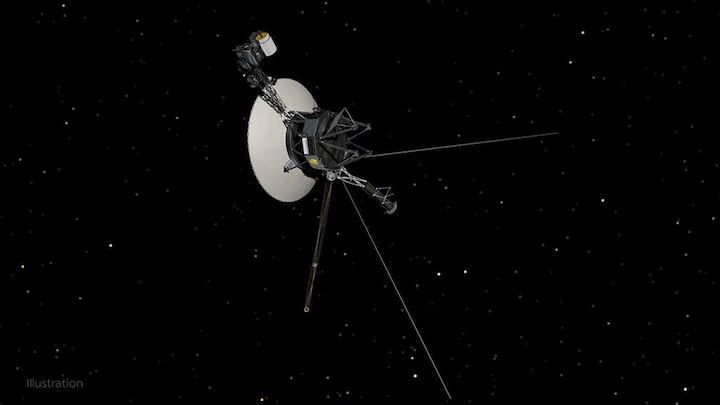15.06.2022
The spacecraft is operating properly, but it's confused about its location.

NASA's Voyager 1 team is trying to work out why the spacecraft appears to be confused about its location in space, but the mission's distance from Earth makes solving the issue challenging.
The Voyager 1 mission launched in 1977 with a design lifetime of five years. Nearly 45 years and a series of planetary flybys later, the spacecraft is now around 14.5 billion miles (23.3 billion kilometers) from Earth, exploring interstellar space. The spacecraft has made countless discoveries, but has also suffered a number of anomalies and mysteries. The latest of these is junk telemetry data being sent back to Earth.
"We have a problem with the Voyager 1 spacecraft," Thomas Zurbuchen, NASA's associate administrator for the Science Mission Directorate, said at a meeting of the National Academies of Sciences, Engineering and Medicine's Space Studies Board on Thursday (June 9), where he offered more details about the situation and what it might mean for the mission.
While the spacecraft is operating well, messages from the Voyager's Attitude Articulation and Control System, which keeps the spacecraft and its antenna in the proper orientation, are "not reflecting what's actually happening on board," Zurbuchen said.
Getting to the bottom of this confusion is no easy matter, however, due to the vast distance between Earth and Voyager 1, meaning long delays in the time it takes to communicate with Voyager 1, almost making the spacecraft a victim of its longevity. "Imagine you have a conversation with somebody in which you can only say a word every day," Zurbuchen said. "And you only hear back every other day. That's the kind of discussion that we have."
Zurbuchen is confident that the Voyager team will solve the mystery, but noted that the spacecraft cannot continue forever. In addition to the current communications issue, Voyager 1 is also running at much colder temperatures than it was designed to because of the decay of the spacecraft's nuclear power source.
"I'm not telling you that it's the end of that mission," he emphasized, noting that the team behind the mission has addressed many glitches over Voyager's long life.
"Make no mistake, there were issues, even since I'm at NASA, that really were concerning about Voyager; the team has solved it," he said. "But also, if one day, it's no longer solved, it is an immediate success and we should take out the champagne."
Quelle: SC
